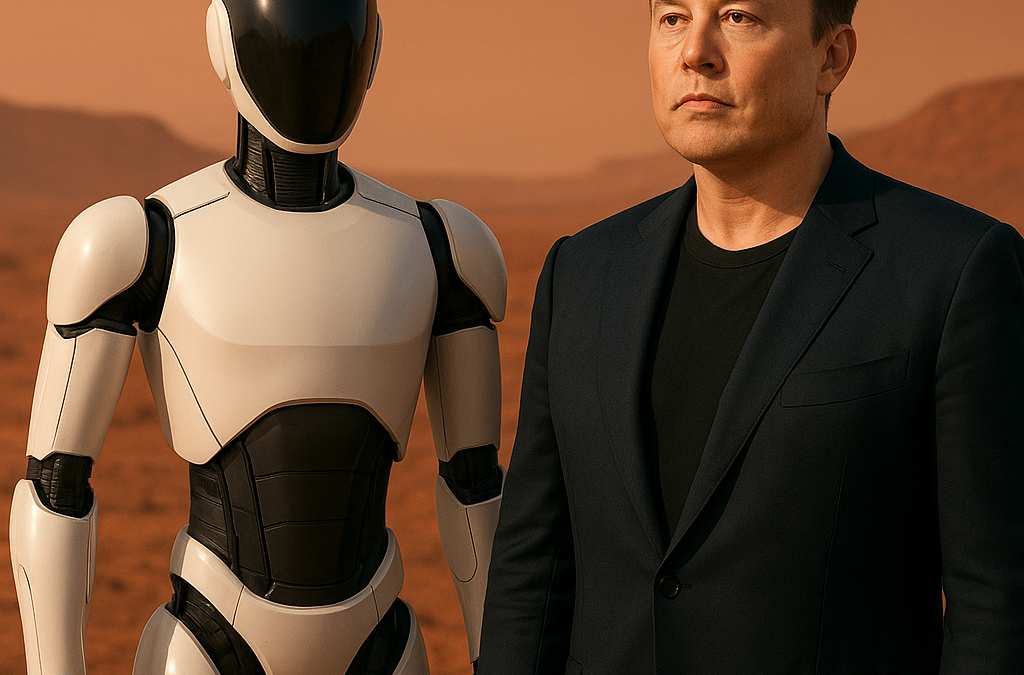Elon Musk Plans to Deploy Humanoid Robots to Mars by 2026
Elon Musk has announced plans to send Tesla’s humanoid robots, known as Optimus, to Mars by 2026 using SpaceX’s Starship. Learn about the mission goals, timeline, challenges, and expert opinions on this groundbreaking step toward a multi-planet future.
Elon Musk’s Vision: Robots Before Humans
Billionaire entrepreneur Elon Musk is pushing the boundaries of science and technology once again. Through Tesla and SpaceX, he plans to deploy humanoid robots to Mars by late 2026. These robots, called Optimus (Tesla Bot), are designed to perform vital tasks—building structures, setting up power systems, and preparing the Martian surface for the first human settlers.
The mission will use SpaceX’s Starship, a fully reusable rocket built for interplanetary travel. According to Musk, launching humanoid robots first will allow SpaceX to test living conditions and establish basic infrastructure before humans arrive, likely around 2029.
What Are Tesla’s Optimus Robots?
Tesla’s Optimus robots were first unveiled in 2021. Initially designed for labor and repetitive work on Earth, Musk now wants to adapt them for space exploration. The robots stand about 1.7 meters tall, powered by advanced AI and neural networks, similar to the technology used in Tesla’s self-driving cars.
On Mars, these robots would serve as pioneers—exploring terrain, installing equipment, and testing life-support systems. Their performance will help determine when it’s safe to send humans to the Red Planet.
Challenges Facing the Mars Robot Mission
Sending humanoid robots to Mars is an extraordinary engineering challenge. Experts identify several major obstacles:
-
Harsh environment: Mars experiences dust storms, radiation, and extreme temperature swings that can damage electronics and motors.
-
Autonomy requirements: Communication delays mean robots must think and act independently.
-
Starship readiness: The mission depends on SpaceX achieving multiple successful Starship flights and landings before 2026.
-
Durability and maintenance: Once on Mars, robots must function for months or years without human repair.
Despite these challenges, Musk believes that continuous innovation, AI improvement, and iterative testing will make the plan possible.
Expert Opinions: Skepticism and Hope
Not all scientists share Musk’s optimism. Robotics expert Christian Hubicki warned that humanoid robots can easily “fall, break, or crash,” especially on Mars’ rough terrain. Others argue that specialized rovers might perform better than humanoids in early exploration phases.
Still, Musk insists that Optimus will evolve rapidly, learning from each mission—just as Tesla vehicles improve through software updates. His approach emphasizes speed, experimentation, and adaptation.
A Step Toward a Multi-Planet Civilization
Even if the 2026 launch slips to 2028 or later, the idea of humanoid robots on Mars marks a revolutionary turning point. It merges artificial intelligence, robotics, and space travel into one mission that could define the next century of exploration.
Musk’s vision is clear: use robots to prepare Mars for human life, ensuring that humanity becomes a multi-planet species. Whether 2026 or later, the journey has already begun.
